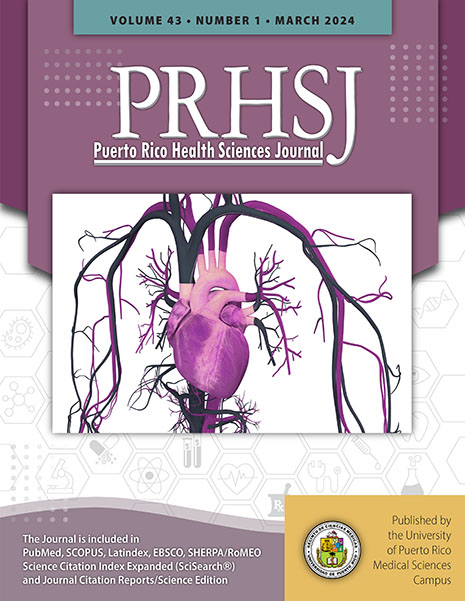Abstract
Background & Objectives: Patients with non-alcoholic fatty liver disease (NAFLD) have high prevalences of hypertension (HTN), type 2 diabetes mellitus (T2DM), and cardiovascular disease (CVD), and vice versa. The mechanism of this development is unknown but appears to be related to an underlying metabolic derangement that affects multiple organs. This study aimed to determine the prevalences of these conditions in patients with diagnosed NAFLD. Methods: Our cohort study aimed to determine the prevalences of HTN, T2DM, and CVD in NAFLD patients registered in the liver database of the University of Puerto Rico School of Medicine; this information is recorded in their medical records. Patients whose liver disease had a different etiology were excluded. The study was approved by the UPR Medical Sciences Campus Institutional Review Board. Results: Our final sample consisted of 141 NAFLD patients; 64.5% (n = 91) of them were females. The average age was 69 (±10.2 years). The prevalences of HTN, T2DM, and CVD were 53.9%, 57.5%, and 7.8%, respectively. In patients with NAFLD, there was a significant association between T2DM and being 65 years old or older (P < 0.001). Conclusion: Our data indicate that HTN and T2DM are highly prevalent in NAFLD patients in PR; however, CVD prevalence was lower than expected. Additional, studies are required to further define the associations. We recommend metabolic condition screening for all NAFLD patients.
Authors who publish with this journal agree to the following terms:
a. Authors retain copyright and grant the journal right of first publication with the work simultaneously licensed under a Creative Commons Attribution License that allows others to share the work with an acknowledgement of the work's authorship and initial publication in this journal.
b. Authors are able to enter into separate, additional contractual arrangements for the non-exclusive distribution of the journal's published version of the work (e.g., post it to an institutional repository or publish it in a book), with an acknowledgement of its initial publication in this journal.
c. Authors are permitted and encouraged to post their work online (e.g., in institutional repositories or on their website) prior to and during the submission process, as it can lead to productive exchanges, as well as earlier and greater citation of published work (See The Effect of Open Access).
